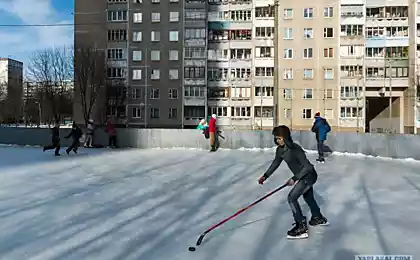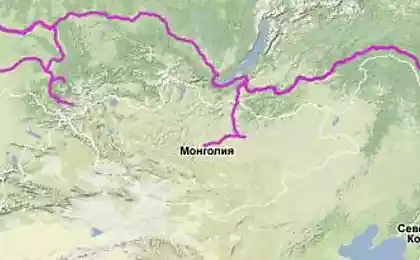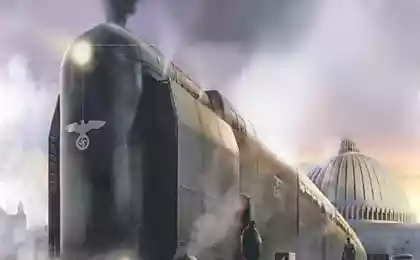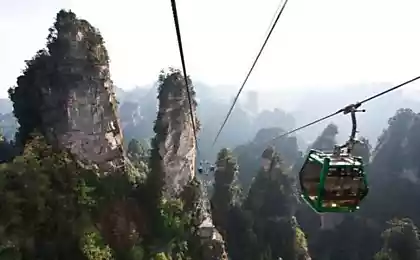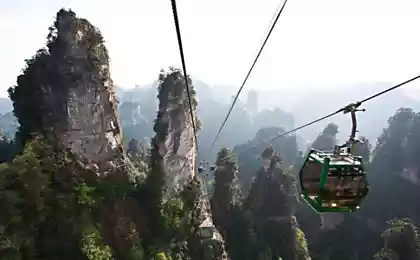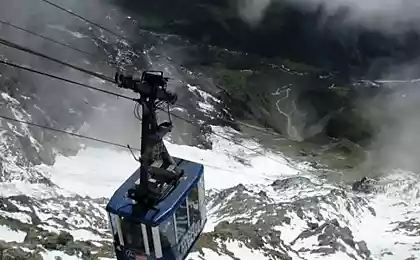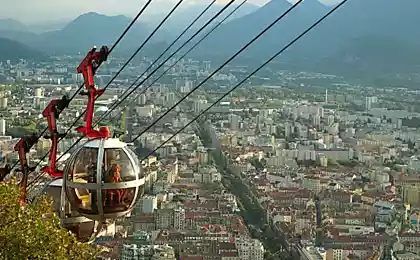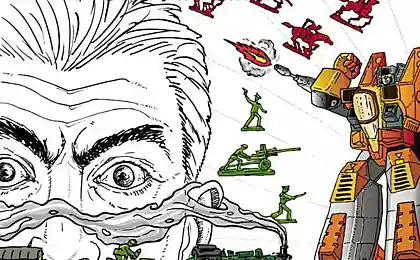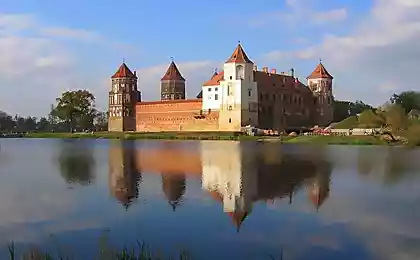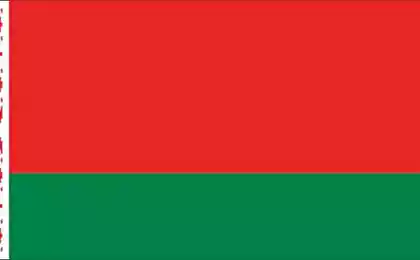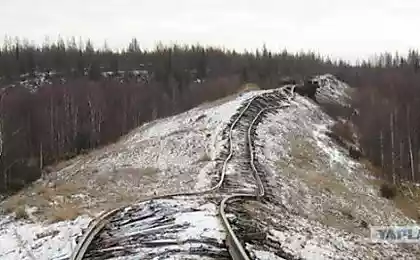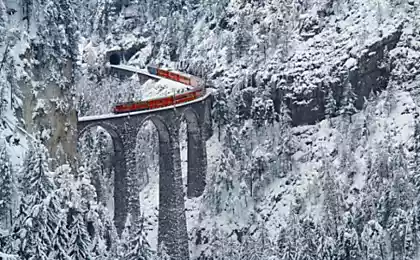1544
Children's Railway in Minsk
In the early 1950s, Belarus has not yet had time to recover from the post-war devastation, but, nevertheless, the republic's leadership has paid special attention to educational work among the youth. One of the directions of this work was the children's railway. But to restore children's railway, who before the war in Gomel apparently considered it inappropriate. And then it was decided to build a new one, in the capital - Minsk. September 30, 1954 Resolution of the Council of Ministers of the Byelorussian SSR for this purpose provision has been made in the amount of nearly five million rubles. In the autumn of 1954 began the construction of the Minsk children's railway. In the construction of the road was attended by schoolchildren from Minsk. They carried out excavation work, painted offices, broken beds, planting flowers, set on the road road signs. Meanwhile, in the circles was theoretical training children to work on the children's railway.
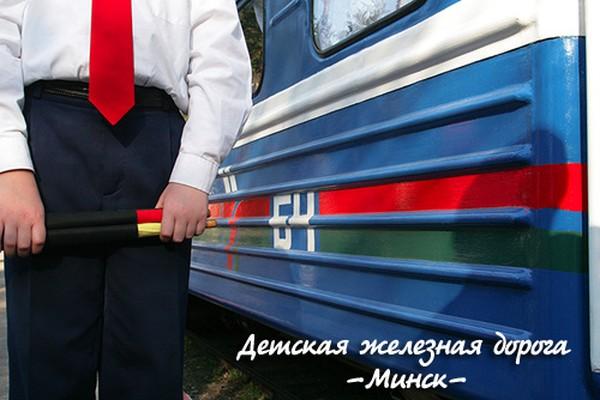
On Sunday, July 9, 1955 hundreds of Minsk with children came to the opening of the children's railway. At Park Kultury station apron stood waiting for the departure of the train six green cars with a locomotive headed. First Deputy Minister of Education of the BSSR FN Cossacks cut scarlet ribbon. Thus began the movement of trains on the Minsk children's railway.
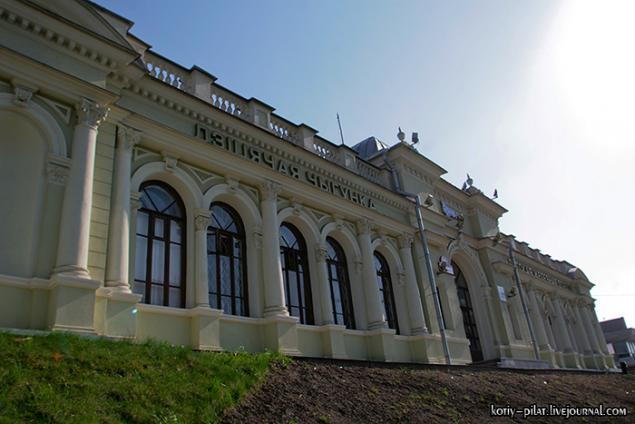
At the time of opening of the road there were two stations: Cultural Park and Pine Forest. The main, with the most beautiful train station, Park Kultury station began, here young railwaymen studied, performed ceremonial events took guests. It was built high landing platform. At the station Pinery was built beautiful wooden station (unfortunately, it burned to the ground in the 1980s). A little later built another station - Pioneer, and at the opening of the road in its place was a small wooden hut.
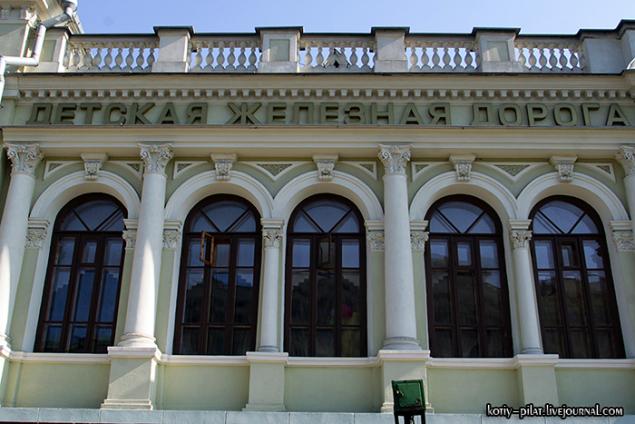
The length of the main ways of the road was 3, 79 km, and the total operational length after the completion of the station Pioneer - about 4, 5 km.

The road begins in the park named Chelyuskintsev and leads into the pine forest "Slepyansky forest" on the eastern outskirts of Minsk. At the station Pinery can go breathe forest air, listen to the birds, but there is more to do practically nothing. The average station - Pioneer - technical, held here outfitting of locomotives and wagons, repair and preparation for the voyage. It is the only station on the road, having enough serious gridiron - five ways, one dead end and eight turnouts. On one of the ways is equipped with a pit.

Now DSB in its path crosses three roads. At the intersection with one of them leading to the parking lot, equipped with unguarded crossing. The other, that at the intersection with the street Makaenka (next to the station Pioneer) - protected. And finally, street Filimonov passes through the overpass over the railroad bed. Of man-made structures should be noted also a bridge over the canal Slepyanskoy water system.

In 1971, Minsk children's railway was named after the legendary guerrilla brigade commander, a railway Stanislavski Zaslonov. Then the Park Kultury station was renamed Zaslonovo. (It should be noted, the station was named after Zaslonovo, and never called "name Zaslonov", as can be seen in some publications.)

In 1975, over "locomotive era" Minsk DSB. Kp4-465 locomotive was scrapped, but not scrapped, as in many other DSB, and turned into a monument. For many years he stood on the stage of the journey to the station Zaslonovo, and then was taken to the DSB. In spring 2003, the locomotive was in possession of a Belarusian businessman who is trying to sell it for a fabulous price, despite the terrible state.
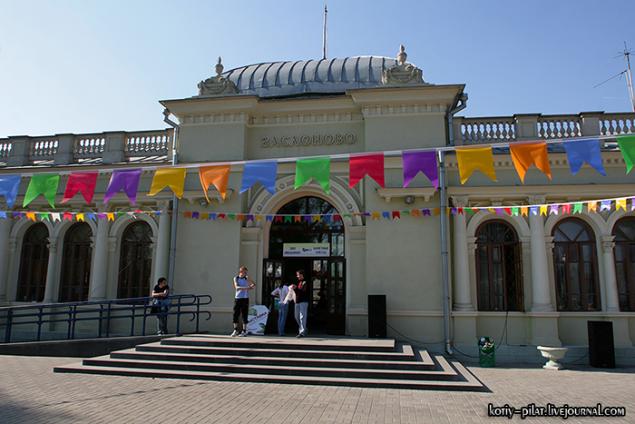
In 1994, the children's road has lost one of its three locomotives: TU2-010 burned. The remaining two locomotives since been used by the Minsk DSB very unusual. Until 2005, the train has always been hooked on both the locomotive. Train conducted standing head TU7A-2782, and the cold TU2-113 was hooked behind him. Two reasons for this: firstly, thus ensures the safety of the second locomotive and its inaccessibility to vandals. Secondly, with W2 be powered locomotive radio station, which could not be properly connected to TU7 diesel locomotive because it applied to a single-wire circuit diagrams.
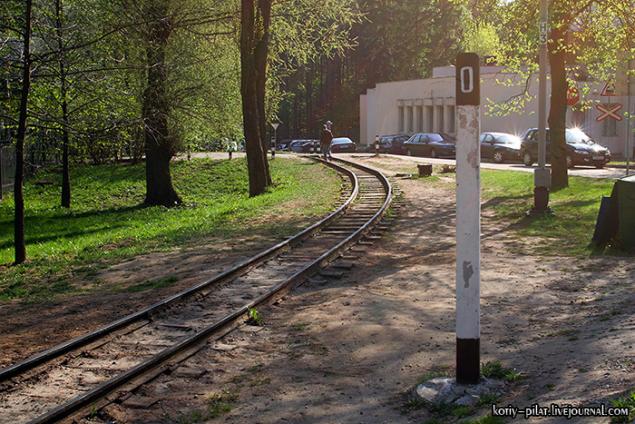
In addition, because there is no need to change the direction of movement of the locomotive at the end stations do not need and the second cabin. Therefore, TU2-113 was absent, and its windows were tightly welded steel sheets. On TU7A 2782-glazed rear of the cabin, too, closed steel sheets, but removable. In summer 2005, the locomotive TU2-113 was sent to Brest Railway Museum, and has since led a train locomotive. Three years later, in the summer of 2008, the road was brand new, just from the factory, locomotive TU7A-3350.
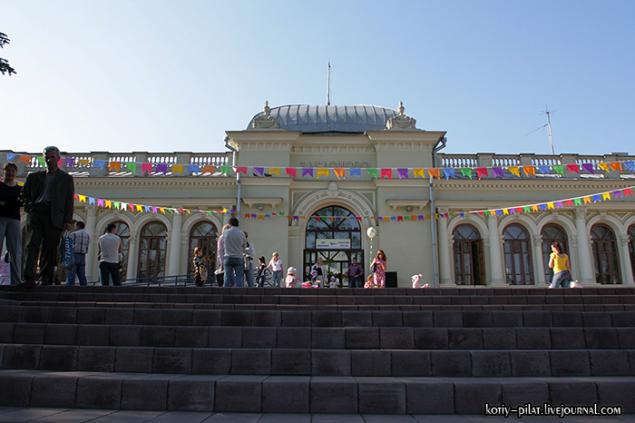
In the late 1980s, developed the project of reconstruction of the road. The project includes the construction of roads and extension of one more station Wonderful mill museum animation. Reconstruction was supposed to end in 2000, to the 45th anniversary of the road. However, beyond the stage of working drawings of things have not gone.
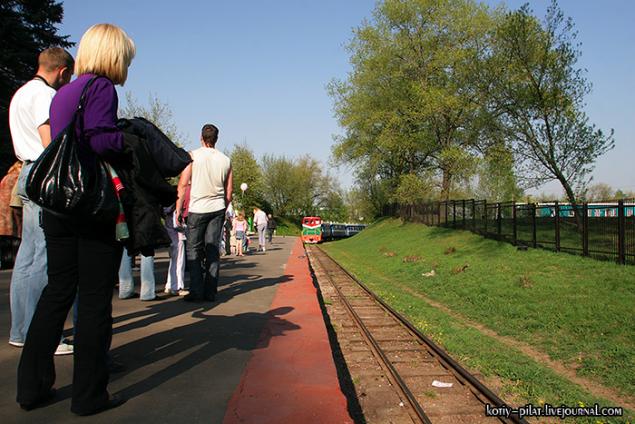
In 2008, the reconstruction plans have changed a lot. It was decided to shift all the way on concrete sleepers and rails P43 overhaul station Zaslonovo and mount it on the canopy over the platform, build a pedestrian bridge on the way to the stadium. Undergo substantial modernization as a means of signaling. Previously not protected against "uninvited guests" Pioneer station is planned to fence fence, and then build a locomotive depot.
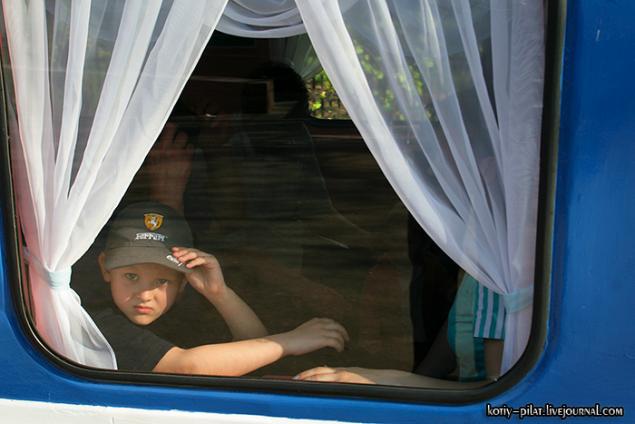
Speaking of the Minsk DSB, can not forget about another. There has always been a rich and interesting life of young railwaymen. At the National competition of children's railways Minsk DSB comes out the winner for several years. Who station Zaslonovo annual exhibitions, competitions railway modeling.
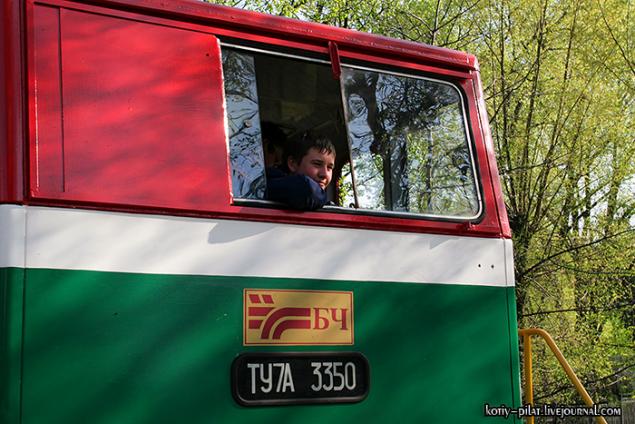

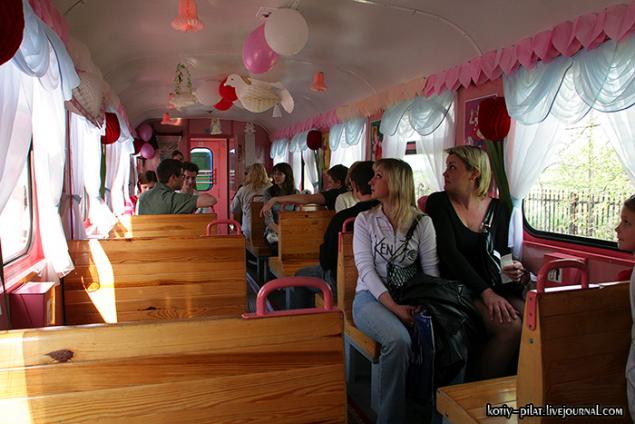


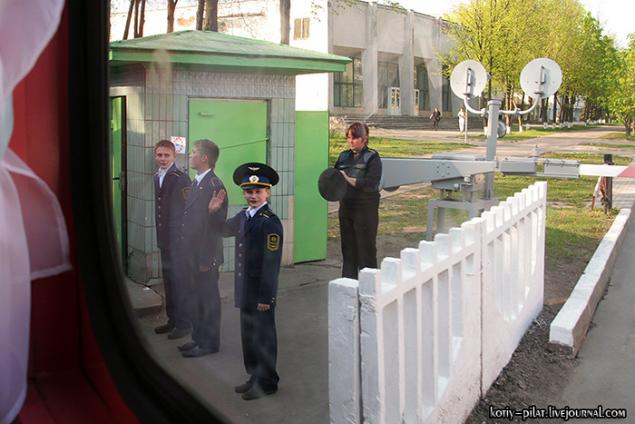
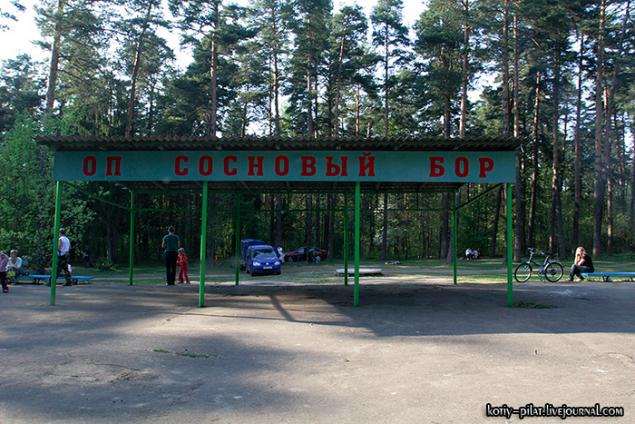

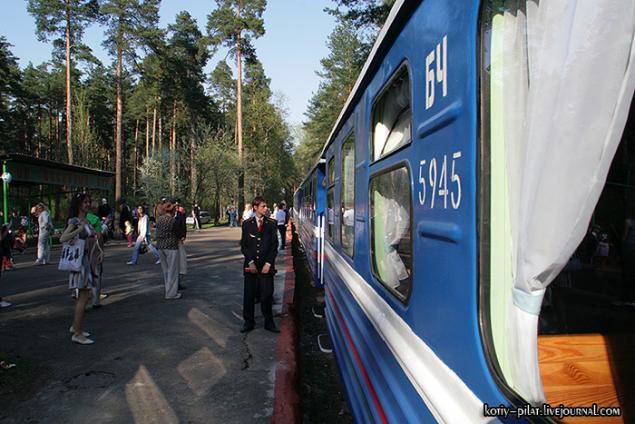


via kotiy-pilat

On Sunday, July 9, 1955 hundreds of Minsk with children came to the opening of the children's railway. At Park Kultury station apron stood waiting for the departure of the train six green cars with a locomotive headed. First Deputy Minister of Education of the BSSR FN Cossacks cut scarlet ribbon. Thus began the movement of trains on the Minsk children's railway.

At the time of opening of the road there were two stations: Cultural Park and Pine Forest. The main, with the most beautiful train station, Park Kultury station began, here young railwaymen studied, performed ceremonial events took guests. It was built high landing platform. At the station Pinery was built beautiful wooden station (unfortunately, it burned to the ground in the 1980s). A little later built another station - Pioneer, and at the opening of the road in its place was a small wooden hut.

The length of the main ways of the road was 3, 79 km, and the total operational length after the completion of the station Pioneer - about 4, 5 km.

The road begins in the park named Chelyuskintsev and leads into the pine forest "Slepyansky forest" on the eastern outskirts of Minsk. At the station Pinery can go breathe forest air, listen to the birds, but there is more to do practically nothing. The average station - Pioneer - technical, held here outfitting of locomotives and wagons, repair and preparation for the voyage. It is the only station on the road, having enough serious gridiron - five ways, one dead end and eight turnouts. On one of the ways is equipped with a pit.

Now DSB in its path crosses three roads. At the intersection with one of them leading to the parking lot, equipped with unguarded crossing. The other, that at the intersection with the street Makaenka (next to the station Pioneer) - protected. And finally, street Filimonov passes through the overpass over the railroad bed. Of man-made structures should be noted also a bridge over the canal Slepyanskoy water system.

In 1971, Minsk children's railway was named after the legendary guerrilla brigade commander, a railway Stanislavski Zaslonov. Then the Park Kultury station was renamed Zaslonovo. (It should be noted, the station was named after Zaslonovo, and never called "name Zaslonov", as can be seen in some publications.)

In 1975, over "locomotive era" Minsk DSB. Kp4-465 locomotive was scrapped, but not scrapped, as in many other DSB, and turned into a monument. For many years he stood on the stage of the journey to the station Zaslonovo, and then was taken to the DSB. In spring 2003, the locomotive was in possession of a Belarusian businessman who is trying to sell it for a fabulous price, despite the terrible state.

In 1994, the children's road has lost one of its three locomotives: TU2-010 burned. The remaining two locomotives since been used by the Minsk DSB very unusual. Until 2005, the train has always been hooked on both the locomotive. Train conducted standing head TU7A-2782, and the cold TU2-113 was hooked behind him. Two reasons for this: firstly, thus ensures the safety of the second locomotive and its inaccessibility to vandals. Secondly, with W2 be powered locomotive radio station, which could not be properly connected to TU7 diesel locomotive because it applied to a single-wire circuit diagrams.

In addition, because there is no need to change the direction of movement of the locomotive at the end stations do not need and the second cabin. Therefore, TU2-113 was absent, and its windows were tightly welded steel sheets. On TU7A 2782-glazed rear of the cabin, too, closed steel sheets, but removable. In summer 2005, the locomotive TU2-113 was sent to Brest Railway Museum, and has since led a train locomotive. Three years later, in the summer of 2008, the road was brand new, just from the factory, locomotive TU7A-3350.

In the late 1980s, developed the project of reconstruction of the road. The project includes the construction of roads and extension of one more station Wonderful mill museum animation. Reconstruction was supposed to end in 2000, to the 45th anniversary of the road. However, beyond the stage of working drawings of things have not gone.

In 2008, the reconstruction plans have changed a lot. It was decided to shift all the way on concrete sleepers and rails P43 overhaul station Zaslonovo and mount it on the canopy over the platform, build a pedestrian bridge on the way to the stadium. Undergo substantial modernization as a means of signaling. Previously not protected against "uninvited guests" Pioneer station is planned to fence fence, and then build a locomotive depot.

Speaking of the Minsk DSB, can not forget about another. There has always been a rich and interesting life of young railwaymen. At the National competition of children's railways Minsk DSB comes out the winner for several years. Who station Zaslonovo annual exhibitions, competitions railway modeling.











via kotiy-pilat



